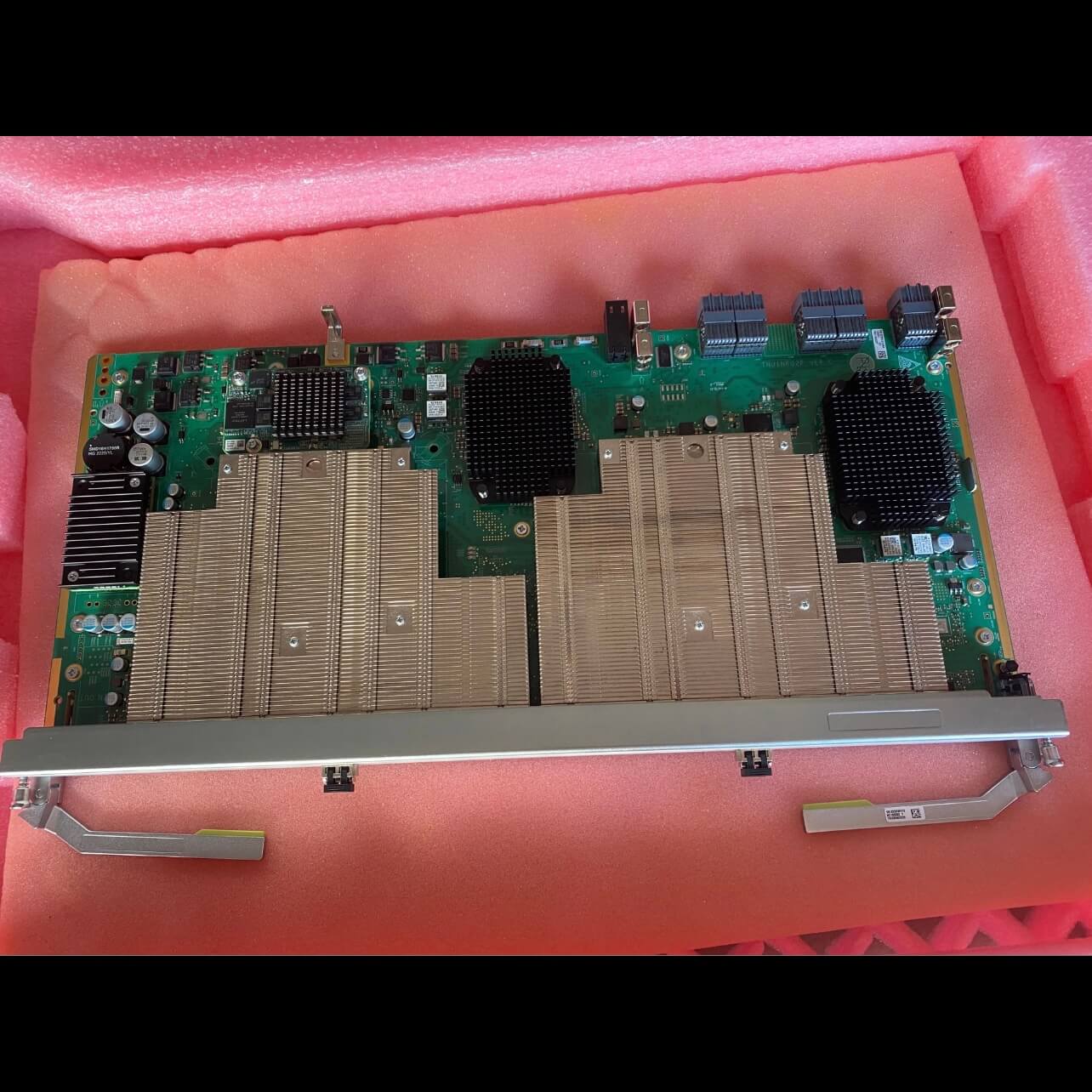Link You To Professional Networks

TNS3N505 Is Huawei OptiX OSN 9800 5 Port 200G/100G Line Service Processing Board

Huawei OptiX OSN 9800 5 Port 200G/100G Line Service Processing Board TNS3N505 Overview
TNS3N505: 5*200G/100G Line Service Processing Board
The board TNS3N505 supports the following module:
200G CFP2A26(Metro lite,SDFEC2@200G e16QAM,Coherent,Tunable,Extended C Band,-7dBm-0dBm,-25dBm,Fixed)
The TNS3N505 board electrically regenerates unidirectional OTU optical signals, which are carried over DWDM wavelengths at both the transmit and receive ends.
The optical receiver receives the optical signals to be regenerated through IN optical ports and converts them into electrical signals.
The OTN processing module performs FEC decoding, overhead processing, and FEC encoding, which is the process of reshaping, regenerating, and retiming the electrical signals and mapping them into OTN-frame signals.
The OTN processing module then sends the OTN-frame signals to the optical transmitter. After performing E/O conversion, the optical transmitter produces and sends out OTU optical signals over DWDM wavelengths through the OUT port.
The transmit and receive directions are defined in the signal flow of the board. The transmit direction is defined as the direction from the backplane to the WDM side of the board, and the receive direction is defined as the reverse direction.
The following describes the signal flow in the transmit direction along with the module functions.
VC-4 signals and ODUk signals can be cross-connected through the backplane.
The VC-4 signals are received by the VC cross-connect module and sent to the SDH processing module for STM-N framing and overhead processing. The generated STM-N signals are sent to the OTN processing module.
The ODUk signals are received by the ODUk cross-connect module and directly sent to the OTN processing module.
The OTN processing module maps the STM-N signals to the payload of appropriate ODUk signals, performs OTN framing and FEC encoding of the signals, and then produces and sends OTU electrical signal to the WDM-side optical module.
The WDM-side optical module receives the OTU electrical signal from the OTN processing module, performs E/O conversion, and sends out one OTU optical signal over a DWDM wavelength through the OUT port.
Functions and Features of the TNS3N505 Board
|
Function and Feature |
Description |
|
Basic function |
Implements mutual conversion between OTN signals and five OTUC2/OTU4 signals. |
|
Backplane capacity |
The total backplane bandwidth is 1 Tbit/s. |
|
WDM specification |
Supports the DWDM specifications. |
|
Tunable wavelength |
Supports tunable wavelengths of WDM-side optical signals in Super C band (1524 nm to 1573 nm). |
|
FEC coding |
|
|
Line modulation format |
|
|
Typical channel spacing |
|
|
OTN overhead protocol |
Supports the OTN frame format and overhead processing defined by ITU-T G.709. |
|
OTN overhead |
|
|
OSU |
Not supported |
|
Intra-board 1+1 protection |
Supported NOTE: Supports intra-board 1+1 protection when working with optical protection boards. |
|
ODUk SNCP |
Supported |
|
OSUflex SNCP |
Not supported |
|
Tributary SNCP |
Supported |
|
Electrical-layer ASON |
Supported |
|
Optical-layer ASON |
Supported NOTE: Only ASON without optical parameters is supported in high SOP mode. The flex ASON must be enabled for the modulation formats whose channel spacing is greater than 50 GHz. |
|
ALS |
Not supported |
|
Physical clock |
Supported NOTE: When the ODU cross-connect granularity of an OTN line port is set to the maximum granularity supported by the port, physical clock synchronization is not supported. The physical clock can be used only after lower-order ODU cross-connections are configured. |
|
IEEE 1588v2 |
Not supported |
|
Outband DCN |
Supports communication over ESCs. |
|
Test frame |
Not supported |
|
PRBS |
Supports the PRBS function on the WDM side. |
|
Latency measurement |
Delay measurement in the WDM-side optical port direction (upstream direction) is supported.
|
|
Channel loopback |
Supports ODUk (k=0, 1, 2, 2e, 3, 4, flex) channel inloops and outloops. |
|
Port loopback |
Supports WDM Side Loopback |
|
Alarm and performance event monitoring |
|


